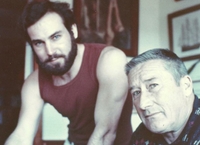In detailing the United States' obsession with the Red Menace, Barson and Heller deliver an enticing visual treat of movie poster art, images from comic books and bubble-gum cards (featuring pictures of Mao and Stalin to collect and trade), as well as graphics from political pamphlets, national news magazines, pulp paperbacks and "serious" nonfiction (like J. Edgar Hoover's Masters of Deceit). While the introductions to the book's eight sections and the explanatory text are necessarily brief, the writing is lucid, engaging and historically accurate; additional historical material appears in detailed time lines. But the collection's raison d'être lies in the myriad iconographic examples of how popular culture was used as a national propaganda tool, while simultaneously reflecting mainstream political and social trends. Ranging from the humorous (a J. Edgar Hoover comic book) to the frightening (a copy of Red Channels, the pamphlet that started the television blacklist) and the ironic (an article entitled "Women: Russia's Second Class Citizens"), these cultural artifacts are stark reminders of how political ideology is promoted and produced in everyday life. Coauthors of Teenage Confidential, Barson (who has a Ph.D. in American culture) and Heller (senior art director at the New York Times) have done a fine job wedding text and visuals to create an illuminating social history that carefully walks the line between conveying the historical and political importance of its subject and our urge to view it as kitsch. (July)


